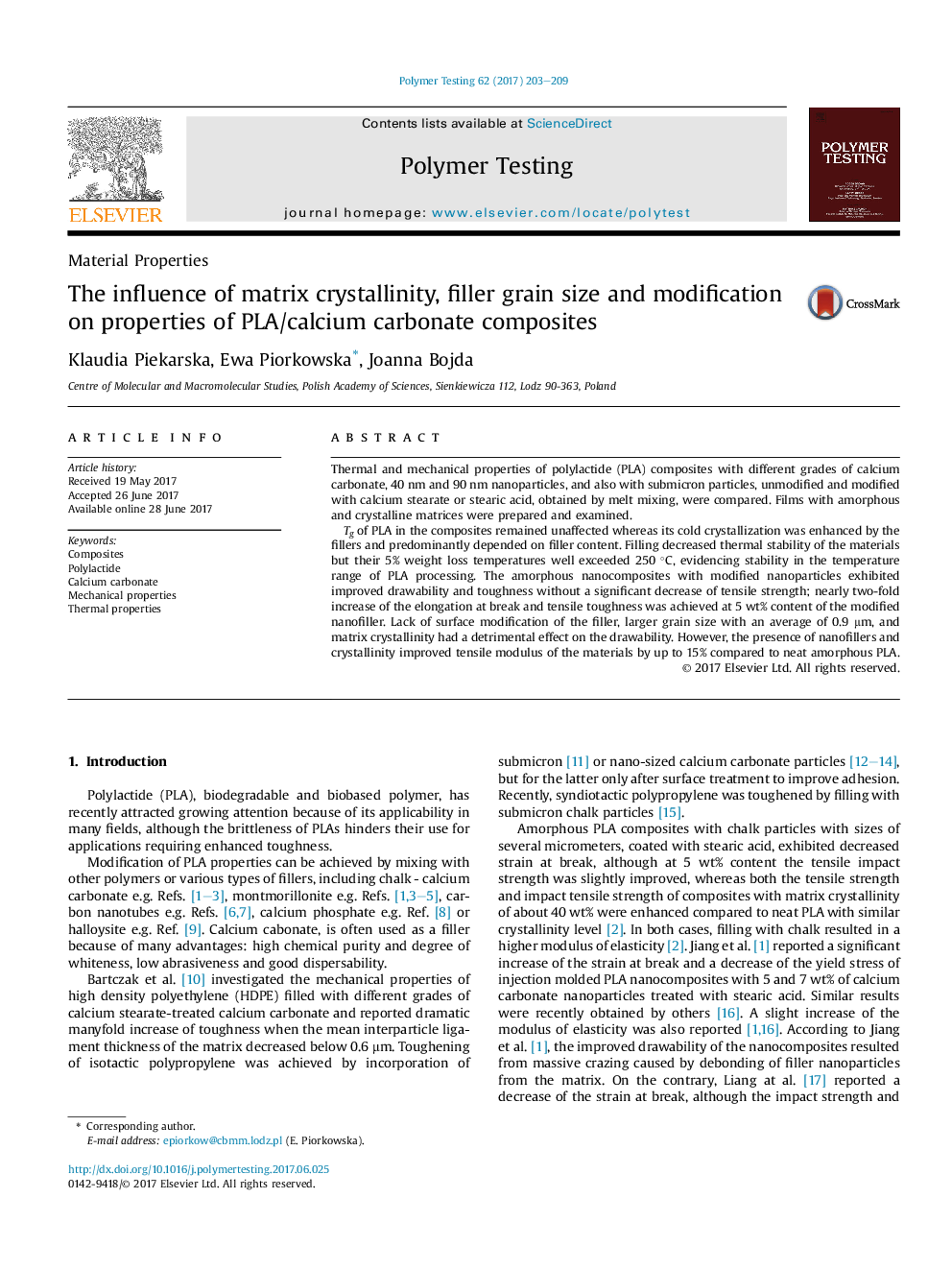| Article ID | Journal | Published Year | Pages | File Type |
|---|---|---|---|---|
| 5205382 | Polymer Testing | 2017 | 7 Pages |
Abstract
Tg of PLA in the composites remained unaffected whereas its cold crystallization was enhanced by the fillers and predominantly depended on filler content. Filling decreased thermal stability of the materials but their 5% weight loss temperatures well exceeded 250 °C, evidencing stability in the temperature range of PLA processing. The amorphous nanocomposites with modified nanoparticles exhibited improved drawability and toughness without a significant decrease of tensile strength; nearly two-fold increase of the elongation at break and tensile toughness was achieved at 5 wt% content of the modified nanofiller. Lack of surface modification of the filler, larger grain size with an average of 0.9 μm, and matrix crystallinity had a detrimental effect on the drawability. However, the presence of nanofillers and crystallinity improved tensile modulus of the materials by up to 15% compared to neat amorphous PLA.
Related Topics
Physical Sciences and Engineering
Chemistry
Organic Chemistry
Authors
Klaudia Piekarska, Ewa Piorkowska, Joanna Bojda,
